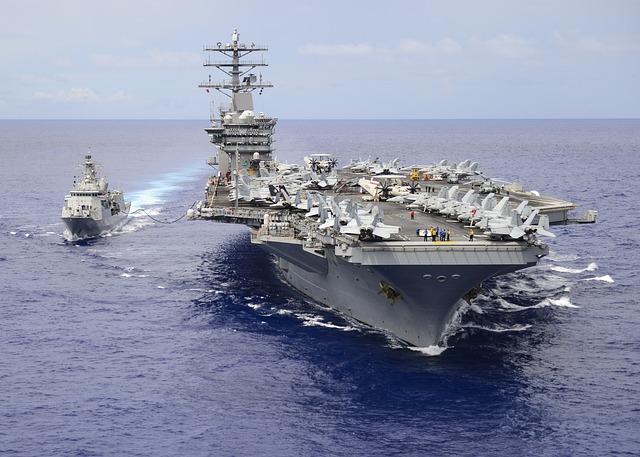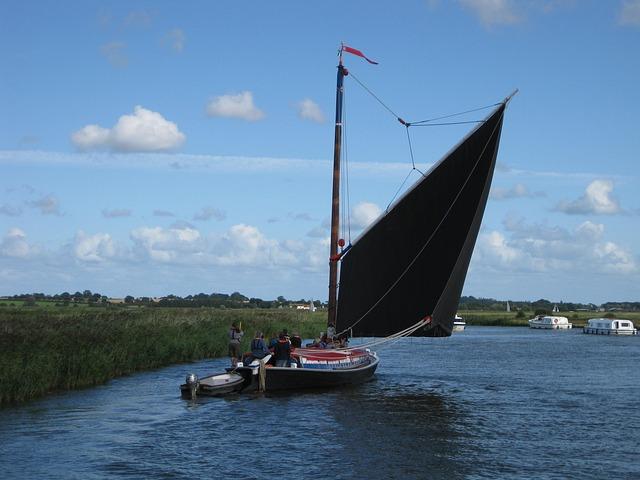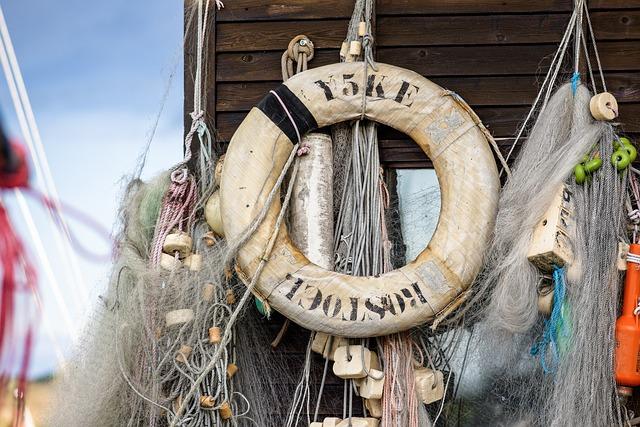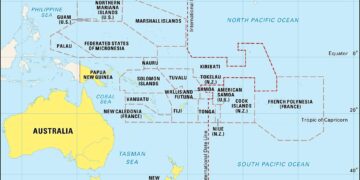The USS Omaha (LCS 12),a Freedom-variant littoral combat ship of the United States Navy,has embarked on a significant mission as part of the Oceania Maritime Security Initiative (OMSI). This initiative aims to bolster maritime security across the vast expanses of the Pacific Ocean, especially in response to the growing challenges posed by illegal fishing, trafficking, and other illicit maritime activities. By participating in OMSI, the USS Omaha exemplifies the U.S. commitment to enhancing regional partnerships and ensuring the safety and stability of the maritime environment in Oceania. This article will explore the strategic objectives of the initiative, the role of USS Omaha, and the broader implications for security and cooperation in the Pacific region.
USS Omaha Strengthens Regional Partnerships in Oceania maritime Security Initiative
The USS omaha has taken significant steps in enhancing its partnerships within the Oceania region through its active participation in the Oceania Maritime Security Initiative (OMSI). This collaborative effort aims to address various maritime challenges, including illegal fishing, trafficking, and environmental protection. By forging stronger ties with regional nations, the USS Omaha not only reinforces its commitment to a free and open Indo-Pacific but also enhances the collective security framework across the region. Through joint exercises, workshops, and data sharing, the initiative fosters interoperability among naval forces, ensuring readiness to respond to emerging threats.
Key focus areas of the initiative include:
- Enhanced Surveillance: Utilizing advanced maritime patrol capabilities to strengthen situational awareness.
- Resource Protection: Safeguarding the rich marine biodiversity and enforcing sustainable fishing practices.
- Training and Capacity Building: Offering technical assistance and training to regional maritime forces.
To illustrate the collaborative efforts and recent activities undertaken under OMSI, the following table summarizes key interactions and their outcomes:
| Activity | Date | Outcome |
|---|---|---|
| Joint Maritime Exercise | August 15-20, 2023 | improved operational coordination among Pacific navies |
| Information Sharing Workshop | September 10, 2023 | Enhanced data intelligence for threat assessment |
| Environmental Protection Initiative | October 5, 2023 | Launch of joint anti-pollution measures |

Key missions and Objectives of the Oceania Maritime Security Initiative
The Oceania Maritime Security Initiative (OMSI) aims to bolster maritime security in the pacific region through a coordinated approach that enhances collaboration among multiple stakeholders. key missions of the initiative include:
- Patrolling Vulnerable Waters: Regular patrols in high-risk maritime zones to deter illegal fishing and trafficking.
- Interagency Cooperation: Strengthening partnerships between regional navies, coast guards, and law enforcement agencies.
- Capacity Building: Providing training and resources to improve the operational capabilities of local maritime forces.
In pursuit of these objectives, OMSI also focuses on information sharing and interoperability among partners. notable objectives include:
| Objective | Description |
|---|---|
| Enhanced Surveillance | Utilizing advanced technologies for real-time monitoring of maritime activities. |
| Joint Exercises | Conducting regular drills and exercises to improve readiness and response. |
| Community Engagement | Collaborating with local communities to raise awareness of maritime security issues. |

Innovative Technologies Utilized by USS omaha for Enhanced Surveillance
The USS Omaha incorporates a range of cutting-edge technologies to bolster its surveillance capabilities during missions such as the Oceania maritime Security Initiative. Equipped with advanced radar systems, the vessel can detect and track multiple targets over vast distances, ensuring comprehensive situational awareness. Among its critical assets are:
- Multispectral sensors: Enhance detection of both surface and subsurface vessels.
- Unmanned aerial vehicles (UAVs): Extend reconnaissance reach and provide real-time imagery.
- Electronic Warfare Systems: support dialog interception and signal analysis.
In addition to these technologies, USS Omaha employs elegant software solutions for data processing and analysis. This integration allows the crew to quickly interpret information and make real-time decisions. The shipS combat management system streamlines communication across various platforms, ensuring that intelligence is shared seamlessly.Below is a summary of the primary technological components:
| Technology | Function |
|---|---|
| Radar Systems | Target detection and tracking |
| UAVs | Extended surveillance capabilities |
| Electronic Warfare Systems | Signal interception and analysis |
| Combat Management System | Information sharing and analysis |

Navigating Challenges: Lessons Learned from Recent Operations
The recent operations conducted by the USS Omaha under the Oceania Maritime security Initiative have underscored the significance of collaboration and adaptability in the face of diverse challenges. One of the primary lessons learned is the importance of communication among partner nations. Effective dialogue not only facilitates operational efficiency but also strengthens relationships between allied forces, fostering trust and mutual support. In high-pressure situations, maintaining clear and consistent channels of communication enables teams to respond swiftly to evolving circumstances and ensures that everyone is aligned with strategic objectives.
Additionally, the flexibility in mission planning proved vital as operational environments rapidly morphed. As the USS Omaha engaged with various maritime threats, it became evident that a one-size-fits-all approach is inadequate. teams encountered unexpected obstacles which required rapid reassessment of tactics and objectives. Key takeaways from this experience include:
- continuous training to enhance readiness and adaptability
- Regular evaluation of equipment and technology to support mission requirements
- The necessity of post-mission reviews to identify areas for improvement

Recommendations for Future Maritime Security Collaborations in Oceania
As the maritime landscape in Oceania continues to evolve, it is crucial for nations to enhance cooperative measures aimed at preserving stability and security within the region. Strengthening partnerships among Pacific Island countries,Australia,New Zealand,and the United States will be instrumental in addressing common threats such as illegal fishing,smuggling,and human trafficking. Collaborative training exercises and operational exchanges can facilitate the sharing of best practices, foster interoperability, and build trust among maritime forces. Establishing regional maritime security forums can also serve as a platform for dialogue and coordination, allowing stakeholders to tackle issues collectively.
Forward-thinking initiatives should prioritize the integration of advanced technologies in maritime monitoring and surveillance.investing in systems that utilize artificial intelligence and satellite tracking will considerably enhance situational awareness across vast ocean territories. Moreover, the establishment of a data-sharing network among regional actors can streamline information flow and improve response times to emergent threats. To ensure the sustainability of these security collaborations, embracing local capacities through training programs directed at Pacific Island nations could empower them to take an active role in safeguarding their maritime domains. By proactively engaging in these strategies, Oceania can cultivate a unified front against maritime challenges in the years ahead.

In Conclusion
the USS Omaha’s participation in the Oceania Maritime Security Initiative underscores the United States’ commitment to enhancing maritime security and cooperation in the Pacific region.This deployment not only reinforces alliances with partner nations but also demonstrates a proactive approach to addressing emerging maritime challenges. As the threats to maritime safety and sovereignty continue to evolve, collaborative efforts like these are crucial for maintaining peace and stability in Oceania. The successful execution of this mission highlights the importance of ongoing dialogue and cooperation among nations in safeguarding shared interests and ensuring a secure maritime environment for all.















